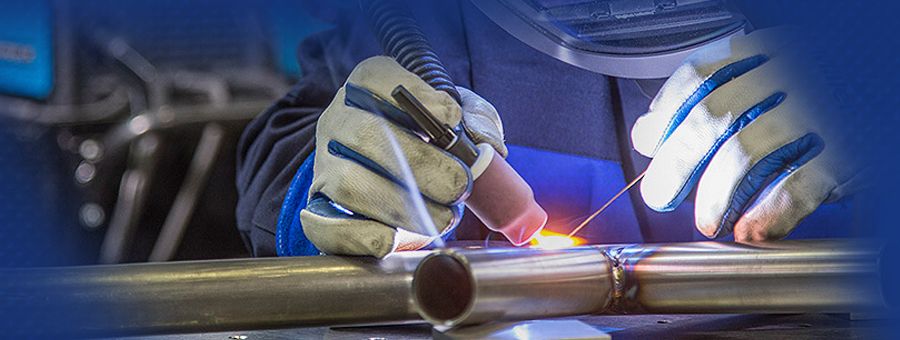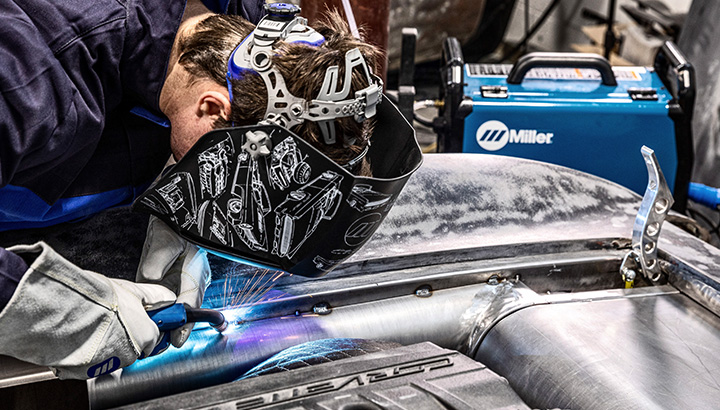Usual Welding Repair Service Issues and Just How to Address Them Efficiently
Welding repair services commonly run into a variety of problems that can jeopardize the stability of the end product. Usual problems include insufficient infiltration, porosity, and imbalance, to name a few. Each problem presents distinct obstacles that call for particular strategies for resolution. Comprehending these issues is important for welders aiming to improve their skills and end results. This conversation will certainly explore these typical welding repair issues and effective methods to address them.
Insufficient Penetration
Insufficient infiltration occurs when the weld metal falls short to completely fuse with the base material, causing weak joints and prospective structural failures. This issue frequently originates from inadequate heat input, incorrect electrode angle, or improper welding speed. Welders might come across poor infiltration because of a mistake of the needed criteria for a particular product thickness or kind. Additionally, contamination on the base product's surface can impede effective bonding, exacerbating the issue. To attend to poor penetration, welders should ensure appropriate settings on their devices and keep a tidy job surface area. Routine inspection of welds is recommended to determine any type of shortages early, enabling for prompt adjustments and the avoidance of endangered structural stability in bonded settings up.
Porosity
Porosity is a common problem in bonded joints that shows up as small gas bubbles caught within the weld steel. This issue can compromise the integrity of the weld, causing reduced stamina and prospective failing under stress and anxiety. Belgrade Welding. Porosity typically develops from contamination, wetness, or inappropriate welding methods, which allow gases to leave right into the molten weld pool. To deal with porosity, welders ought to assure correct surface prep work, keep a tidy working atmosphere, and make use of appropriate welding parameters. In addition, choosing the ideal filler material and securing gas can reduce gas entrapment. Normal examination and screening of welds can help determine porosity early, assuring prompt restorative actions are taken, thereby preserving the quality and dependability of the bonded structure
Imbalance
Misalignment in welding can emerge from various variables, including incorrect configuration and thermal growth. Recognizing the origin triggers is necessary for reliable resolution. Several improvement techniques are readily available to realign parts and ensure structural stability.
Causes of Imbalance
Welding imbalance often comes from a variety of underlying problems that can compromise structural integrity. One main reason is inappropriate fit-up of elements prior to welding, which can result in gaps and uneven surface areas. Variants in thermal development during the welding procedure can likewise lead to distortion, particularly if the products being signed up with have various coefficients of expansion. Furthermore, inadequate fixturing and securing may fail to hold components firmly in position, causing movement throughout welding. Inadequately kept equipment, consisting of welding devices and tools, might present variances in the weld grain, additional contributing to misalignment. Operator mistake, stemming from not enough training or experience, can additionally play a substantial duty in creating misaligned welds.

Improvement Techniques Available
Attending to misalignment efficiently calls for a mix of restorative methods customized to the certain issues available. One common method is using fixtures or jigs to hold components in the appropriate position throughout welding, guaranteeing regular alignment. Furthermore, preheating the products can help in reducing distortion and boost fit-up. For significant imbalance, mechanical adjustment methods, such as using hydraulic jacks or clamps, can be utilized to remedy the setting prior to welding. Post-weld warmth therapy may likewise be required to alleviate stresses brought on by imbalance. Finally, mindful inspection and adjustment throughout the configuration stage can stop imbalance concerns from ending up being significant problems, advertising a smoother welding process and boosting overall architectural integrity.
Distortion
Distortion is a typical obstacle in welding that can arise from different aspects, consisting of uneven heating & cooling. Recognizing the root causes of distortion is important for carrying out efficient avoidance strategies. Addressing this problem not only boosts structural stability yet also enhances the general high quality of the weld.
Sources of Distortion
When based on the intense warm of welding, products often undergo adjustments that can lead to distortion. This sensation primarily arises from thermal development and tightening during the welding procedure. As the weld location warms up, the product increases; upon air conditioning, it acquires, which can produce internal stresses. On top of that, irregular heating across a workpiece can intensify these tensions, resulting in bending or bending. The sort of material likewise plays a considerable function; metals with varying why not try this out thermal conductivity and coefficients of development might react differently, bring about uncertain distortions. Furthermore, inadequate joint layout and inadequate fixturing can add to imbalance during welding, enhancing the probability of distortion. Recognizing these causes is crucial for efficient welding fixing and prevention strategies.
Avoidance Techniques
Effective avoidance techniques for distortion throughout welding focus on controlling warmth input and making certain appropriate joint style. Preserving a constant warmth input assists to reduce thermal development and contraction, which can cause distortion. Utilizing techniques such as pre-heating the work surface can also reduce the temperature level slope, advertising uniform home heating. In addition, selecting suitable joint styles, such as T-joints or lap joints, can boost stability and lower stress concentrations. Carrying out appropriate fixturing to protect the workpieces in location better aids in keeping positioning throughout the welding process. Ultimately, staggered welding sequences can distribute warmth more uniformly, preventing local distortion. By applying these methods, welders can significantly lower the chance of distortion and enhance the general quality of their welds.
Splitting
Fracturing is a typical issue come across in welding repair work, frequently resulting from various factors such as improper cooling prices, product option, or inadequate joint preparation. The occurrence of fractures can greatly jeopardize the integrity of the weld, bring about prospective failures during operation. To address this issue, welders have to initially analyze the origin, ensuring that products are compatible and properly picked for the particular application. Additionally, regulating informative post the cooling price during the welding process is vital; rapid cooling can induce tension and bring about breaking. Appropriate joint design and preparation likewise add to lessening the danger. Applying these strategies can enhance weld quality and durability, ultimately reducing the possibility of cracking in finished weldments.

Insufficient Fusion
A substantial concern in welding repairs is incomplete fusion, which happens when the weld metal does not appropriately bond with the base material or previous weld passes - Montana Mobile Welding and Repair Belgrade. This defect can cause weak points in the joint, possibly jeopardizing the honesty of the bonded structure. Factors contributing to incomplete blend include not enough warmth input, improper welding strategy, and contamination of the surface areas being joined. To address this problem properly, welders must assure correct pre-weld cleansing and surface area preparation, along with adjust their welding specifications to attain adequate penetration and blend. Routine assessment during the welding procedure can also assist identify insufficient fusion early, allowing for timely corrective measures to enhance the overall quality of the weld
Overheating
While welding fixings can enhance structural integrity, overheating presents a considerable difficulty that can bring about product destruction. Excessive warmth throughout welding can modify the mechanical homes of metals, causing decreased toughness, raised brittleness, and warping. This phenomenon is especially critical in high-stress applications where architectural dependability quality welding is paramount. Determining overheating can include aesthetic assessments for discoloration or distortion, in addition to monitoring temperature level throughout the welding process. To alleviate the dangers connected with getting too hot, welders should utilize appropriate strategies, such as regulating warm input, changing travel rate, and using appropriate filler products. Furthermore, executing pre- and post-weld warmth therapies can help restore material buildings and improve the overall high quality of the repair, ensuring lasting efficiency and safety.
Often Asked Inquiries
What Are the Typical Indicators of a Welding Issue?

How Can I Evaluate My Welds for Quality?
To check welds for top quality, one can use aesthetic assessments, ultrasonic testing, and radiographic approaches. Each method ensures structural stability, recognizes issues, and confirms adherence to defined standards, ultimately enhancing the dependability of the welded joints.
What Safety Safety Measures Should I Take While Welding?
When welding, one must focus on security by wearing proper personal protective devices, making sure appropriate ventilation, safeguarding combustible materials away, maintaining a tidy office, and being conscious of surroundings to avoid crashes and injuries.
Can I Repair a Weld Without Renovating the Entire Joint?
Fixing a weld without renovating the entire joint is feasible, depending upon the damages (Montana Mobile Welding and Repair Belgrade). Strategies such as grinding, adding filler material, or making use of a welding procedure can effectively deal with particular defects while preserving the bordering structure
What Tools Are Necessary for Reliable Welding Services?
Important devices for efficient welding fixings include a welding maker, cord brush, grinder, protective gear, clamps, and filler products. Each device plays an important function in guaranteeing top quality and safety and security throughout the repair procedure. Porosity commonly emerges from contamination, dampness, or incorrect welding techniques, which permit gases to run away into the liquified weld swimming pool. Inadequately kept devices, including welding machines and tools, may present incongruities in the weld bead, further contributing to imbalance. When subjected to the extreme warmth of welding, materials often go through modifications that can lead to distortion. Fracturing is an usual issue encountered in welding fixings, frequently resulting from different aspects such as inappropriate cooling rates, product option, or insufficient joint prep work. A substantial concern in welding repair work is incomplete blend, which happens when the weld steel does not appropriately bond with the base product or previous weld passes.